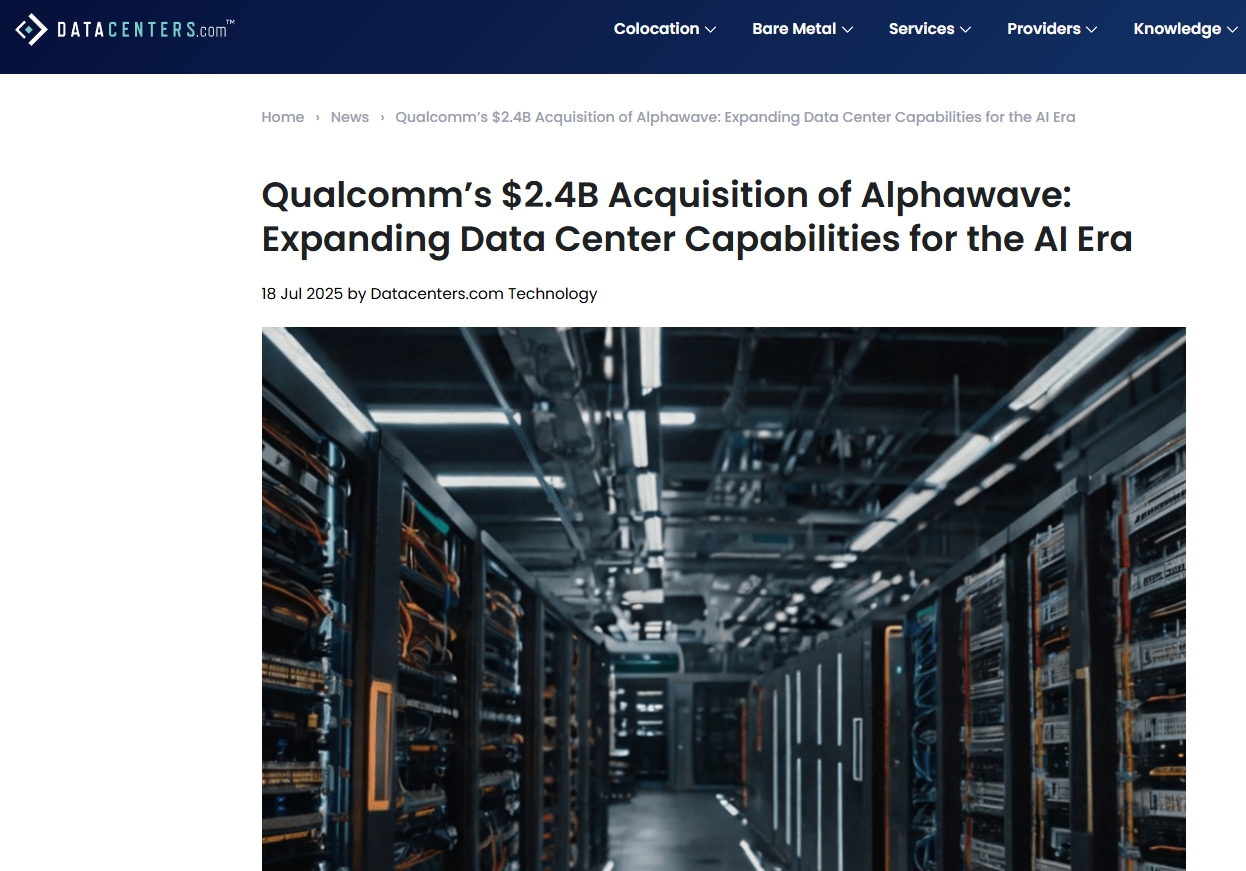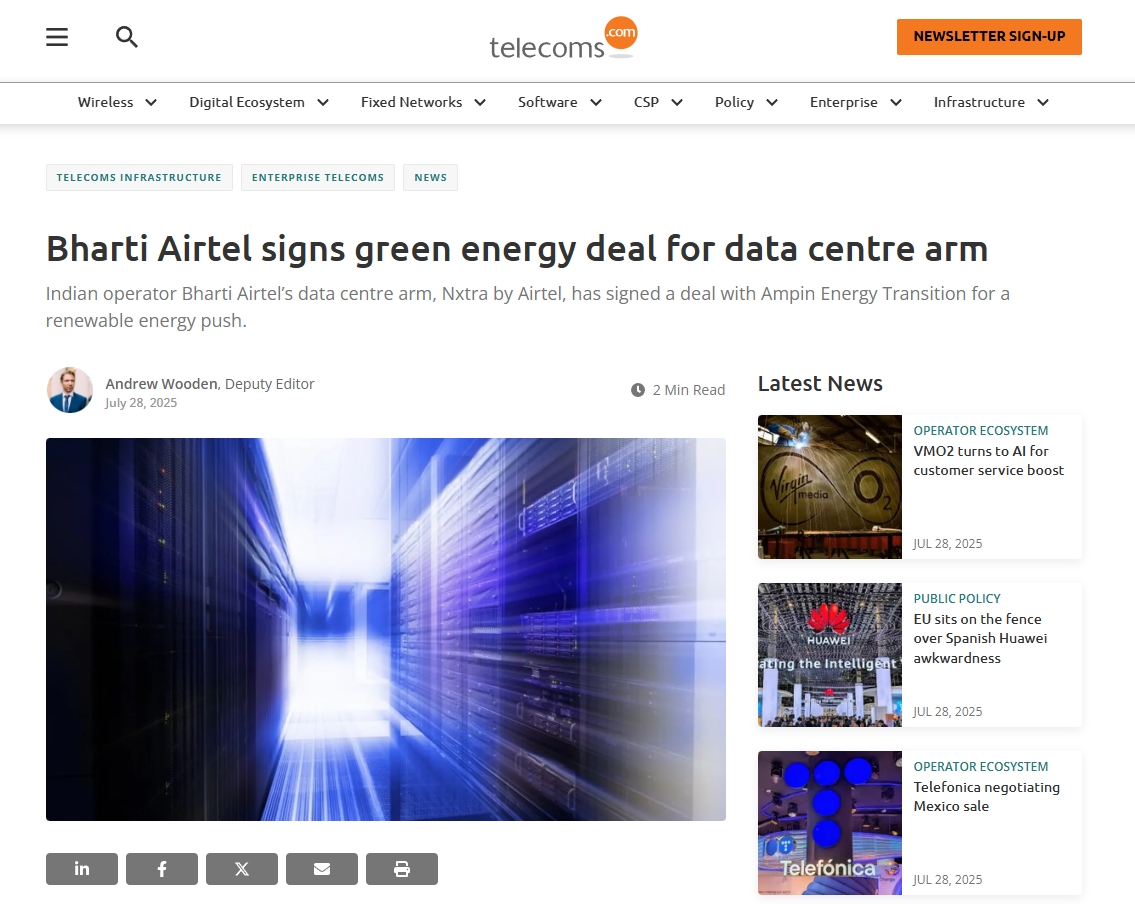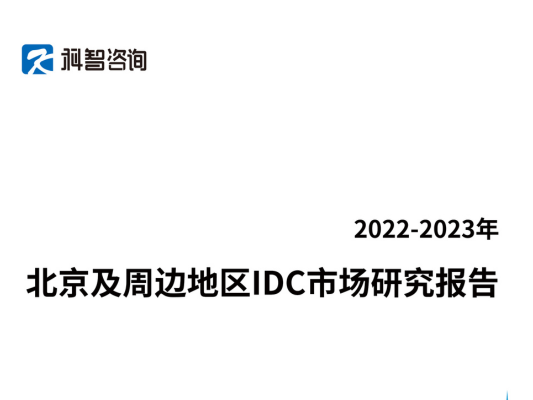A Strategic Deal in a Red-Hot Infrastructure Market
In July 2025, Qualcomm announced its acquisition of Alphawave IP Group in a $2.4 billion all-cash deal that sent waves through the semiconductor and data center industries. The move—widely considered one of Qualcomm’s most aggressive strategic acquisitions to date—marks a calculated pivot from mobile-centric innovation to full-fledged participation in the global data infrastructure buildout.
At the center of this deal is connectivity. As AI, edge computing, and real-time data applications drive bandwidth to unprecedented levels, the bottleneck is no longer just processing—it’s interconnect. Alphawave’s IP and silicon portfolio, built around high-speed connectivity for chip-to-chip and system-to-system data flow, gives Qualcomm a potent toolkit to attack that bottleneck from the ground up.
This is not just a semiconductor play. It’s a direct answer to the question: how do we build data centers that can keep up with AI-scale demand in a cost-efficient, latency-minimized, power-optimized fashion?
What Alphawave Brings to the Table
Alphawave, headquartered in Toronto, Canada, is a fast-growing fabless semiconductor company known for:
High-speed SerDes IP (Serializer/Deserializer)
Die-to-die and chiplet interconnect technology
PCIe Gen6 and 800G Ethernet solutions
AI datacenter PHYs for memory coherence and acceleration
Their clients include many of the world’s top silicon designers and hyperscale cloud providers. The company has positioned itself as a critical enabler for high-performance compute (HPC) and AI workloads, where moving data rapidly between processing units is as important as the compute itself.
With the rise of chiplet architectures and disaggregated computing, Alphawave’s technology is no longer optional—it’s essential. Qualcomm saw that clearly.
Qualcomm’s Infrastructure Ambitions
Historically associated with mobile chips and 5G, Qualcomm has spent the past five years diversifying its silicon portfolio. Its Snapdragon platform still powers billions of mobile devices, but under the surface, a new business line has emerged:
Cloud AI inference chips (AI100, AI200)
Edge AI modules for industrial and automotive workloads
AR/VR silicon platforms for spatial computing
Data center accelerator prototypes under the Orion project
The Alphawave acquisition extends Qualcomm’s ambition into the core data center interconnect space, aligning with broader goals:
Reduce dependency on third-party IP for chiplet and package design
Expand into the AI and cloud infrastructure value chain
Support OEMs and hyperscalers with end-to-end silicon integration
In short, Qualcomm wants to control more of the digital plumbing that makes the modern internet run.
A Focus on Chiplets and AI Workload Optimization
Chiplet-based design is the future of data center semiconductors. Rather than build a monolithic SoC, engineers are increasingly creating modular silicon components (chiplets) that are stitched together in a package using high-speed interconnects.
Alphawave’s die-to-die interconnect IP is perfectly positioned for this shift. It allows:
Modular compute packages with AI, memory, and I/O chiplets
Lower power consumption compared to traditional bus architectures
Simplified manufacturing with better yields
Greater flexibility for custom silicon targeting specialized workloads
As demand for multi-modal LLMs, real-time inference, and AI-enhanced networking grows, chiplet architectures allow faster iteration, better thermal management, and scalability—without the risks of massive monolithic chip design.
With Alphawave, Qualcomm gains proven IP blocks and engineering talent that can accelerate its roadmap for both inference and networking silicon.
The Competitive Landscape
This deal positions Qualcomm alongside major players who have already made big infrastructure moves:
Nvidia with its acquisition of Mellanox (networking) and ARM investment
AMD acquiring Xilinx (FPGAs) and Pensando (DPU/cloud)
Intel expanding its foundry services and acquiring Tower Semiconductor
Broadcom moving deeper into AI fabric and high-performance Ethernet
Marvell driving hard into AI-optimized storage and switching
Qualcomm’s approach is different: it’s leaner, IP-focused, and partner-driven. Rather than build everything in-house, the company excels at stitching together platforms with best-in-class components. The Alphawave acquisition supports this strategy.
Serving a Changing Customer Base
The modern data center customer is not just a hyperscaler. Qualcomm’s acquisition is designed to support three distinct segments:
Cloud Providers
Want tightly integrated, low-power silicon for inference and edge gateways.
AI Startups and OEMs
Need access to scalable interconnect IP for their own chip designs and accelerators.
Telco and Enterprise Infrastructure Vendors
Demand flexible, modular solutions that combine compute, network, and storage.
By integrating Alphawave IP into its broader silicon portfolio, Qualcomm can offer semi-custom designs that align with each segment’s performance, power, and form factor needs.
Implications for Network and Power Efficiency
Data centers are hitting power and bandwidth ceilings. Every watt and nanosecond now matters. Alphawave's technology directly addresses this with:
SerDes IP that supports up to 224 Gbps per lane
Support for die-to-die communication over organic substrates, not just silicon interposers
PHYs optimized for energy-efficient memory access
Tools to simulate and verify signal integrity in large systems
Combined with Qualcomm’s deep power management IP and SoC design experience, this creates a potent toolkit for building low-power, high-throughput silicon for AI and cloud workloads.
The Foundry Factor
An often overlooked part of this acquisition is its impact on foundry partnerships. Alphawave has close working relationships with:
TSMC
Samsung Foundry
GlobalFoundries
Intel Foundry Services (IFS)
These relationships help Qualcomm maintain manufacturing flexibility, critical as geopolitical tensions and global supply chain volatility increase. It also allows Qualcomm to co-optimize its designs for each process node—from 3nm leading-edge AI chips to 12nm chips for industrial edge compute.
Regulatory Landscape and Strategic Significance
The deal has cleared early regulatory review in North America and is expected to pass smoothly through the UK and EU by Q4 2025. The strategic nature of interconnect IP has drawn attention, but neither company is dominant enough in any single vertical to trigger antitrust concerns.
Industry analysts are framing the acquisition as a wake-up call for legacy vendors and a clear signal that interconnect is the new frontier in performance optimization.
Expect to see Alphawave’s IP integrated into Qualcomm’s reference designs for:
AI edge clusters
5G baseband cards
Automotive compute zones
Hyperscale training accelerators
What to Expect Next
Over the next 18 months, Qualcomm is expected to:
Release a new generation of AI100-based inference platforms using Alphawave PHYs
Announce strategic partnerships with hyperscalers to co-develop AI-specific network silicon
Expand support for PCIe Gen6, CXL 3.0, and UCIe in its data center product stack
Launch developer tools to support co-design between Alphawave IP and Qualcomm DSPs
This acquisition sets Qualcomm up as a serious player in the silicon wars—not by brute force, but through precision and strategic alignment.








